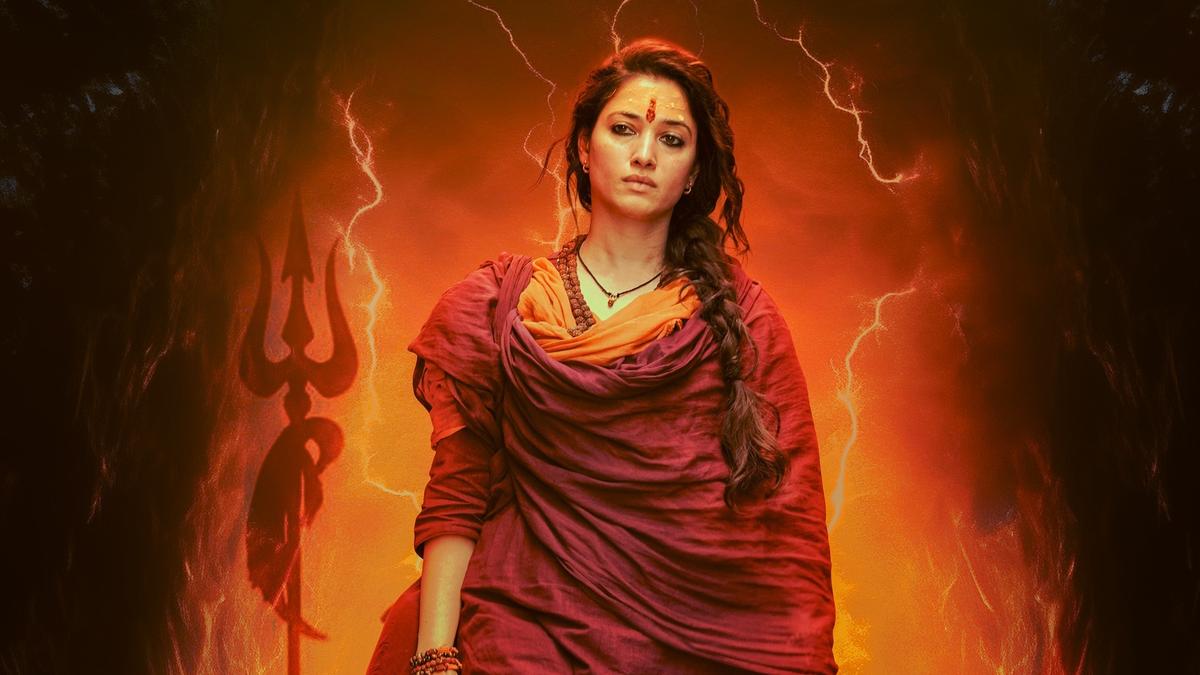
‘Odela 2’ movie review: Tamannaah cannot salvage this outdated sequel
The Hindu
Odela 2 movie review: Tamannaah Bhatia-starrer ‘Odela 2’ is a regressive mishmash of devotion, action, suspense and horror
The 2022 film Odela Railway Station, directed by Ashok Teja and featuring Vasishta Simha and Hebah Patel, was a rural thriller focusing on sexual crimes in a quiet Telangana village. The narrative followed a woman’s chilling revenge after discovering that her husband was the perpetrator. With its use of graphic visuals and a voyeuristic lens on violence, the film, despite its disturbing tone, garnered significant viewership on OTT (Aha Telugu). Ashok Teja and writer Sampath Nandi reunite for its sequel, Odela 2, led by Tamanaah Bhatia, reimagining the story as a supernatural thriller.
After meeting with a horrific end at the hands of his wife, Tirupathi (Vasishta N Simha) returns as a vengeful spirit, undeterred and more dangerous. His spirit manipulates a new set of men, reigniting a similar pattern of crimes in the village. As chaos escalates, the stage is set for the arrival of Bhairavi (Tamannaah), a mythical force destined to restore order. A conventional good-versus-evil showdown ensues.
The premise echoes numerous devotional dramas and horror dramas of the 1990s and 2000s — from Ammoru to Arundhati — where divine intervention becomes imperative to redeem a cursed family or region. Probably buoyed by the success of recent Telugu films such as Virupaksha and Maa Oori Polimera, the setting is so primitive that Odela is portrayed as a village that believes in superstitions, sorcerers and fakirs than cops. Only three kinds of people seem to exist in the village — saints, demons and victims.
Bhairavi, while embodying the wrath of Lord Shiva, seems heavily inspired by Balakrishna’s aghora act in Akhanda. She renounces her family early in life to become an ascetic, is guarded by a snake, defends sacred cows, and even commands a gang of miscreants to sustain themselves on cow urine for livelihood. She chides them with warnings such as khabardaar... khamosh... On the other end, some men discuss sexual assault as revenge, with the gaze on romantic advances of newly wed couples at night, in the guise of portraying the victim’s perspective.
Despite its many flaws, Odela Railway Station sustained interest with an air of mystery. Odela 2 does not score even on that count. Instead, it is fixated on its mythological undertones and crafts bombastic one-liners for its protagonist, unmindful of its outdated script. If you are searching for a silver lining, there is a gender flip — the saviour is a woman, and the evil spirit is a man.
Post intermission, the film morphs into a spiritual sermon. Bhairavi seizes every opportunity to chant fresh mantras and deliver long-winded monologues about the greatness of Shiva. When this phase finally dies down, the narrative shifts to Tirupathi’s pompous, repetitive threats of annihilating the village. The final act — drenched in regressive clichés — could have made an impact had the makers subverted the ever-persistent male gaze.
The writing is mostly lazy, loud, and overwrought, while the action leaning heavily on gore, laced with uncomfortable, sleazy undertones. Vasishta Simha’s voice lends itself well to a no-holds-barred antagonist, but it is wasted on a flat, one-note character like Tirupathi. It is disheartening to see Tamannaah’s formidable screen presence squandered in a film that misses the mark. Hebah Patel fares no better, saddled with a role that serves little purpose in a film caring solely for its female saviour and male demon.

 Run 3 Space | Play Space Running Game
Run 3 Space | Play Space Running Game Traffic Jam 3D | Online Racing Game
Traffic Jam 3D | Online Racing Game Duck Hunt | Play Old Classic Game
Duck Hunt | Play Old Classic Game











